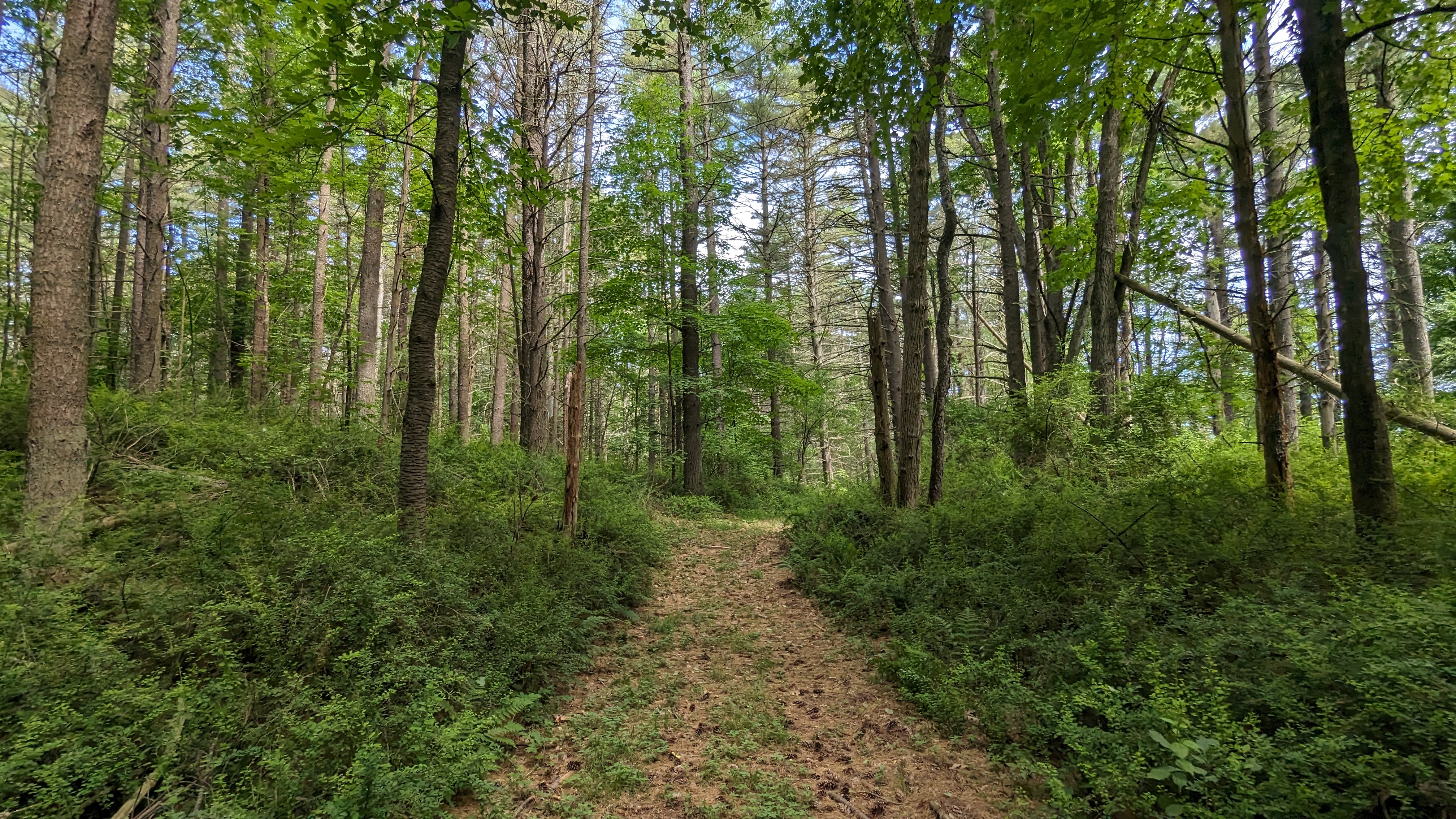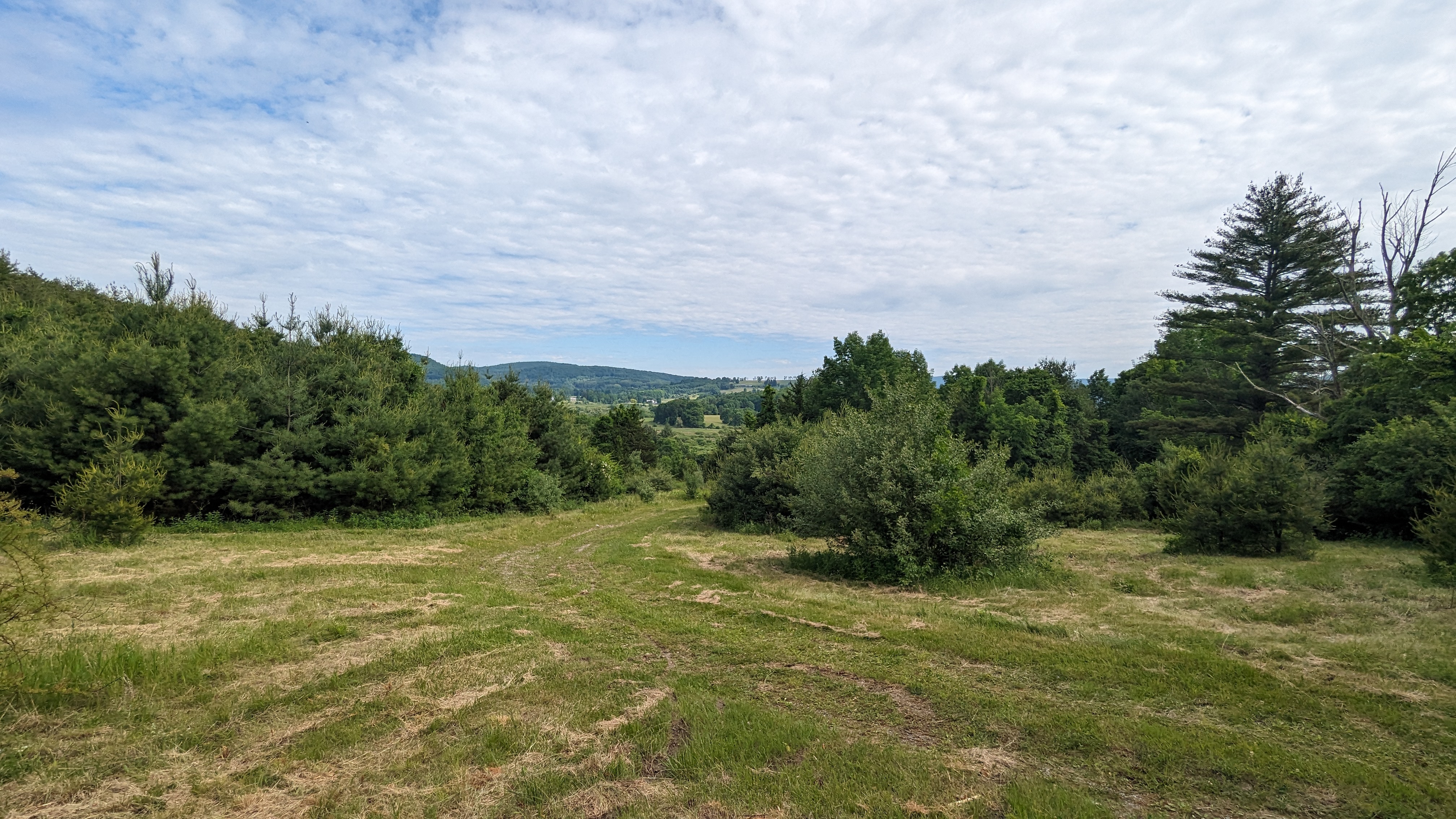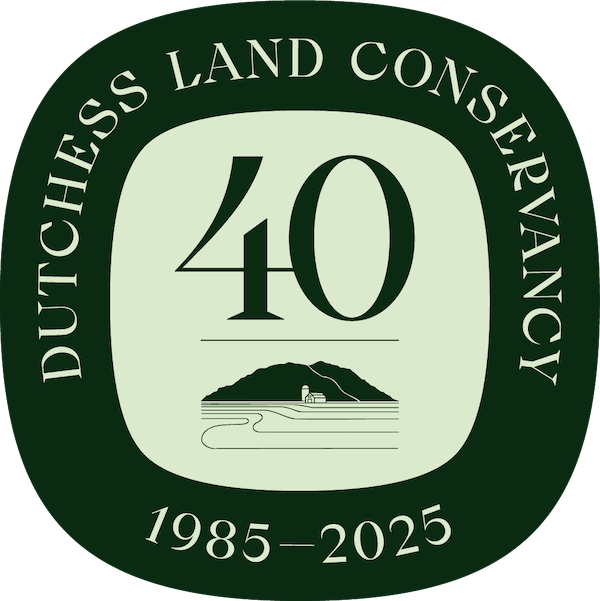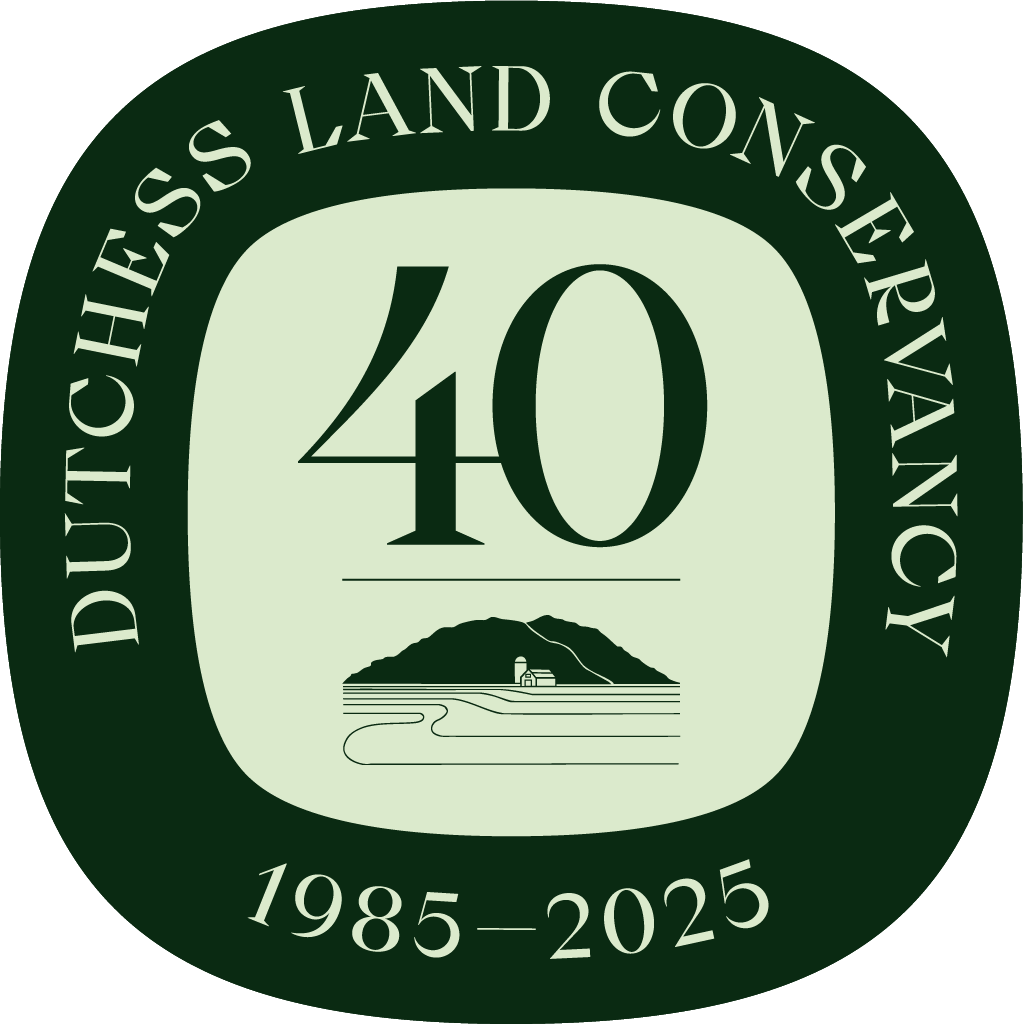Expansive forests spread across 128 acres in the Town of North East tell a spectacular story.

Brooke Schooley and David Head purchased 20 acres in the Dutchess County area more than twenty years ago. Falling in love with the landscape and enjoying a variety of local discoveries, they negotiated to buy the house they were renting in 2003. As time went on, they became more attached to the land, spending their free time hiking and cross-country skiing, even developing an interest in birding, watching for woodthrush, warblers and more. While their property was already in conservation with the DLC, the 128-acre property next door was not, and was a point of concern to the neighborhood. When it came on the market in 2024, Brooke and David moved to purchase it with the idea of using it for walking, skiing and birding. Given their familiarity with the DLC and their desire to preserve the land for future generations, they started working on a conservation easement almost immediately after purchase. “It seemed like the obvious thing to do,” Brooke says, matter-of-factly.
Their stewardship protects bountiful woodlands which rank highly for their ability to ensure a thriving habitat for wildlife and native species. The conserved property adds to a critical mass of more than 3,800 acres of DLC-protected land within a three-mile radius. Wide tracts of unbroken woods are part of a wider forest that stretches for hundreds of acres and abuts additional properties protected under DLC easements. “Creating an easement on this property was especially compelling given how the forestry management practices promoted by DLC have evolved over time,” Brooke continues. “We were able to proceed with confidence that the easement would allow us to actively manage these extensive woodlands to encourage new growth and wildlife.”
 White pines and eastern hemlocks tower above the forest floor, while eastern red cedars edge and dot grasslands. Among the deciduous trees are a wide assemblage of sugar maples, black birches, red oaks, black cherry and American hophornbeam. These forested uplands provide important habitat for the many animals who forage, breed and live there. “There are a lot of bears and coyotes of course, and I’ve seen a bobcat on five separate occasions,” says Brooke, not to mention countless smaller mammals. The property is in the watershed of the Ten Mile River, a tributary to the Housatonic River. A wide variety of turtles, snakes, and toads, along with numerous salamanders, call the wetlands here home.
White pines and eastern hemlocks tower above the forest floor, while eastern red cedars edge and dot grasslands. Among the deciduous trees are a wide assemblage of sugar maples, black birches, red oaks, black cherry and American hophornbeam. These forested uplands provide important habitat for the many animals who forage, breed and live there. “There are a lot of bears and coyotes of course, and I’ve seen a bobcat on five separate occasions,” says Brooke, not to mention countless smaller mammals. The property is in the watershed of the Ten Mile River, a tributary to the Housatonic River. A wide variety of turtles, snakes, and toads, along with numerous salamanders, call the wetlands here home.
The meadows on the property include high quality farmland soils. The couple, who have been actively working to restore the open fields while managing the invasives in the woodlands, would love to have someone graze cows or sheep in the fields to keep them from overgrowing.
“It’s like stepping back 200 years because it is all so unspoiled. It really is a special property,” Brooke says. In fact, the land tells an even longer story because it overlies a bedrock of Stockbridge marble formed some 450 million years ago during the uplift of the nearby Taconic Mountains. Regardless of which part of history you might glimpse looking out in these lovely woods, they tell a pretty spectacular story.


 © Dutchess Land Conservancy. All Rights Reserved.
© Dutchess Land Conservancy. All Rights Reserved.








